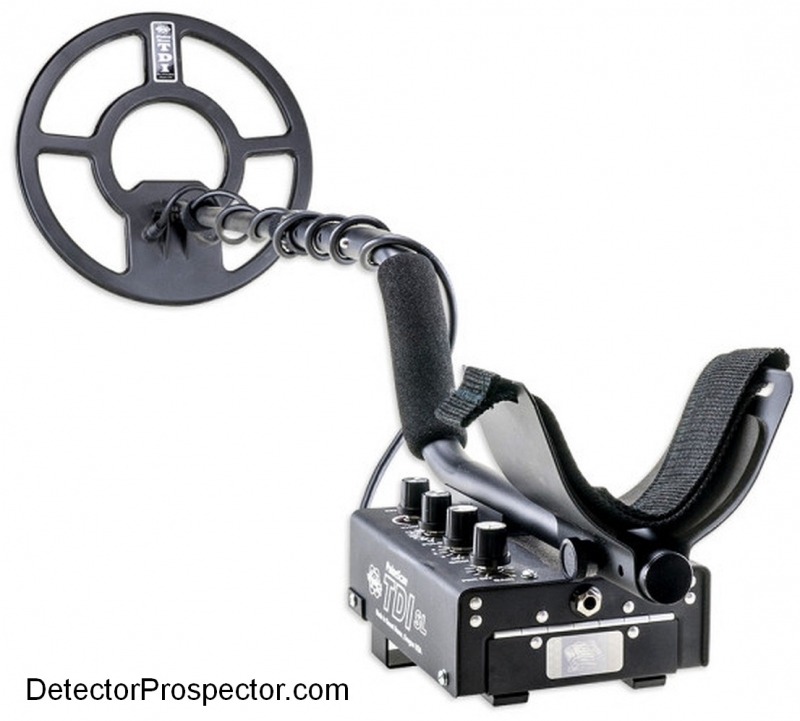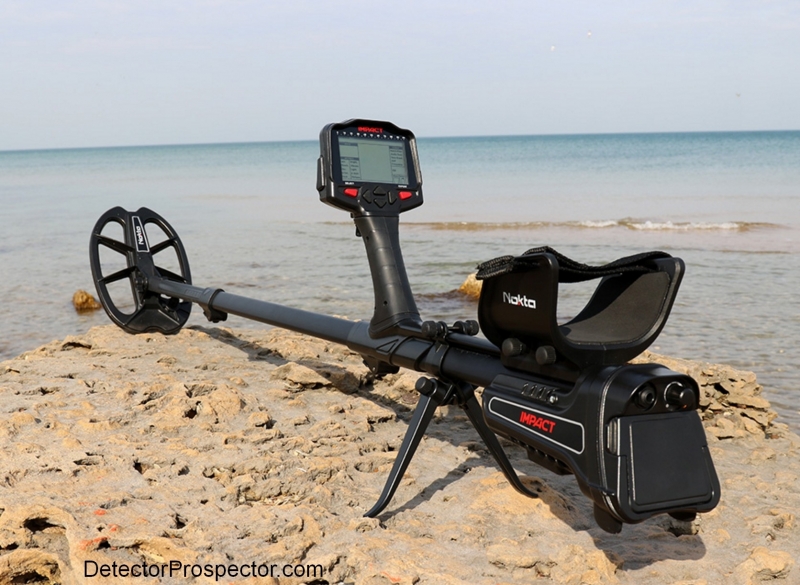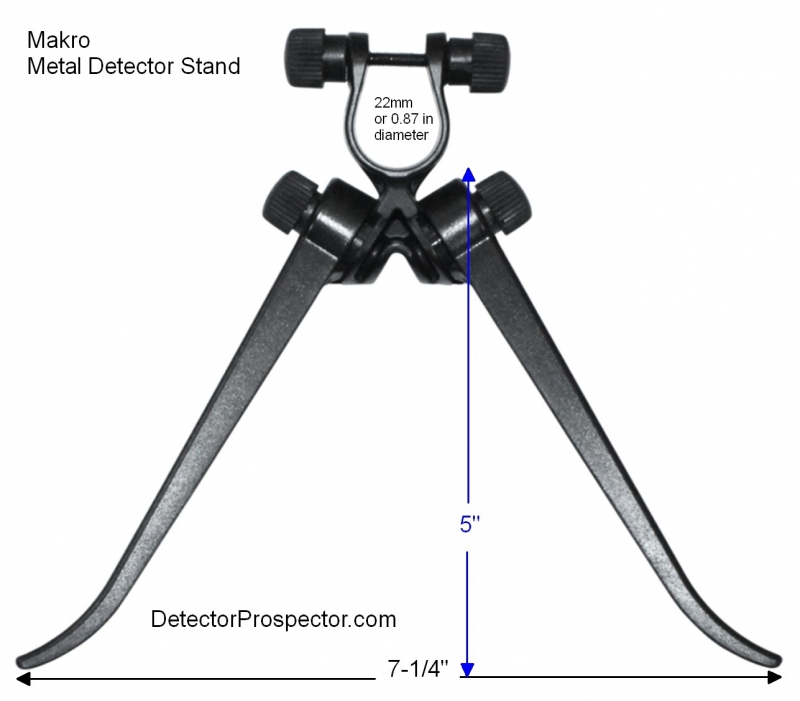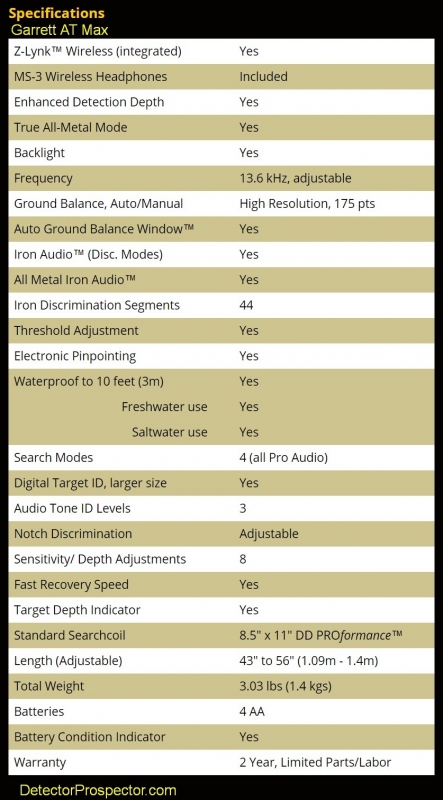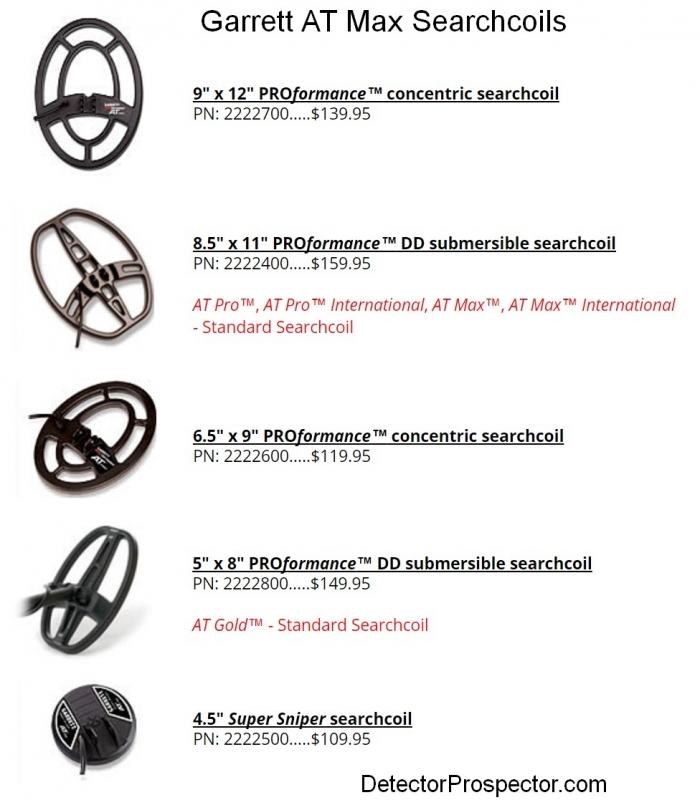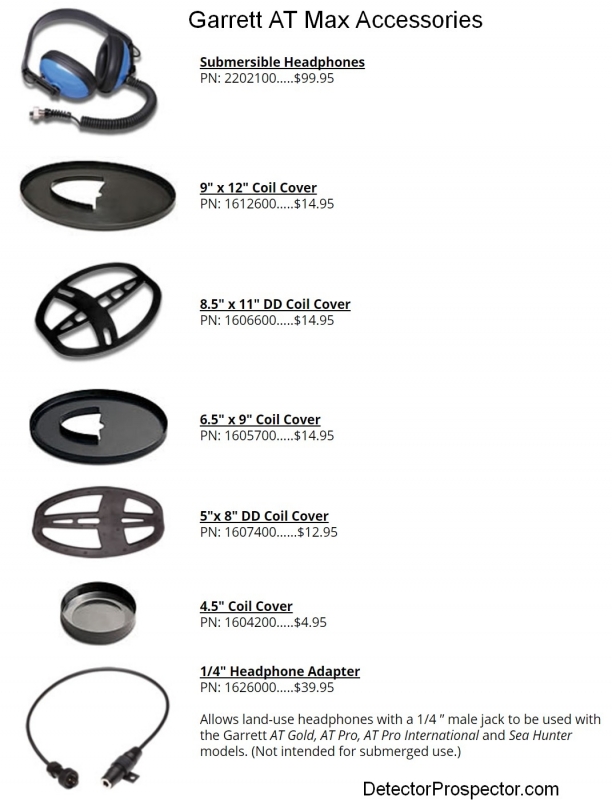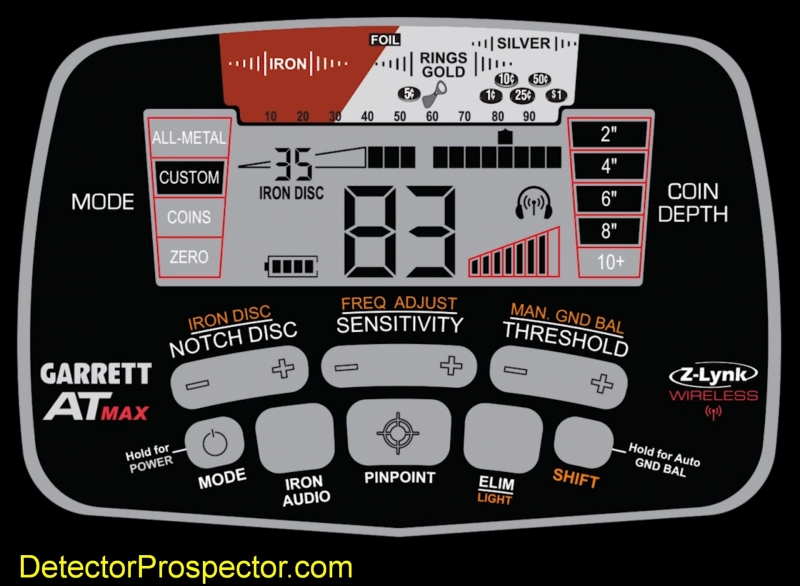-
Posts
19,796 -
Joined
Content Type
Forums
Detector Prospector Home
Detector Database
Downloads
Everything posted by Steve Herschbach
-
OK, final note. Just in case novices or newcomers to the forum are reading all this and taking it as a full blown endorsement of the White's TDI SL. Far from it. I have rigged the game here by placing an reasonable (in my opinion) but artificial set of limits in place. The reality is that many detector users really only care about one thing - pure power. If you are a gold prospector who finds substantial amounts of gold (money) while metal detecting, all else is secondary. Cost is less important because your tools are paying for themselves. Higher cost just means more hours before reaching the breakeven point. For some people price is just not an issue. And ergonomics? I once jokingly told a Minelab engineer he could put spikes in the armrest that made me bleed every minute I was detecting, and if it meant I found a lot more gold, I would do it! Exaggeration perhaps but not that far off the mark either. Given that reality the fact is there just is not a huge demand for machines near last place. The TDI SL shines here because of the parameters I have set up, but it only shines as far as weight and cost. Being a 2 on my "Minelab Scale" means there are a lot of detectors out there with far better performance, especially as not all of them are on that list, like the ATX and SDC 2300. The TDI SL is pretty low on the totem pole. The reality I faced when using the TDI SL was that in low mineral ground it truly is not any better than any good VLF run in all metal mode. In fact given that most VLF detectors will hit smaller gold, and offer some form of ferrous discrimination, the TDI SL is a step backwards. White's own GMT and MXT models both are more compelling choices for most people working in lower mineral environments. You have to get into ground so mineralized or with hot rocks so bad that the GMT or MXT are really struggling before you really see the benefit of the TDI SL. Having a hard time ground balancing, machine overloads unless sensitivity backed way, way down? Hot rocks nearly every swing? Break out the TDI SL and those issues just go away. This is why many people who don't get around much or have not experienced those types of ground conditions are truly puzzled by the TDI SL. Their VLF pretty much kicks its posterior, so they just don't get it, and even go so far as to think the machine is a rip off. A lot of the ground I have encountered in Northern Nevada, for instance, is mild enough that I believe I would be better off running a GMT than a TDI SL, especially given the prevalence of small and porous type gold. Bottom line is that for the TDI SL to look good compared to a decent VLF, you need some really bad ground. So before you go thinking "aha, Steve says I should buy a TDI SL" think again. What I am really trying to do here is get more and better machines into this under 4 lb, under $2K region. The TDI SL simply wins by default.
-
The only thing close to what I think you are asking for is the Nokta Impact Gen(D) mode. MXT or MX Sport Prospect mode with Iron Grunt activated a close second. There is no second tone with the X-Terra Iron Mask. The target either breaks up or blanks completely. All different ways of doing about the same thing, so I guess it is the other features of the machines you also have to consider when making the choice. Keep in mind the X-Terra displays no target id while in Prospect/All Metal mode - the others do. I looked real hard at X-Terra 705 and Gold Bug Pro, both in All Metal/Prospect Mode. They are basically the same for depth/sensitivity. The Gold Bug Pro is just pure audio signal, look at the meter for target id number to decide if you dig. The X-Terra Iron Mask is in some ways more efficient - no meter looking, just set it and hunt by ear. The level of iron rejection is adjustable. In the end I wanted a bit more target information than just ferrous/non-ferrous so I went with the Gold Bug Pro but I have to admit the need to check the meter is annoying so there is much to be said for the X-Terra methodology.
-

Audio Or Visual Target ID
Steve Herschbach replied to tboykin's topic in Metal Detector Advice & Comparisons
Ok, now we are on same page! I sure am not trying to say you should want to use haptic based systems. Nor do I need them - yet. I do hunt by ear. It is about what others may find useful. But I have to admit I am starting to find it useful to watch movies with close captioning turned on - I swear I replay some key passage four times and still can't understand what the heck they are saying! I really am going to do a full blown report on using a detector purely in vibration mode, so stay tuned. -

Gold Monster Delay
Steve Herschbach replied to Shasta gold hunter's topic in Minelab Metal Detectors
There is obviously disappointment over the detectors being late. The consolation for people with money down is being first in line. Those waiting until one is sitting on a shelf waiting to get bought might be waiting all summer. -
I do what I can to foster competition that develops alternatives to the all too common VLF detector. There are plenty of options out there, but in my opinion they all weigh too much or cost too much. Usually both. I envision people out there with a popular VLF metal detector for beach, relic, or gold detecting. These machines all sell for around $700 and weigh 2.5 - 3.9 lbs. Perhaps they would like to add a ground balancing PI (GBPI) to what they have. I think that for "normal people" with normal budgets a machine under $2K and under four pounds just makes sense. It would be more than twice what they spent for their VLF, and in this day and age there is no reason why a decent PI should weigh over 4 lbs. I am drawing the hard line at 5 lbs. I am setting under 4 lbs more as an aspirational goal that I think can be achieved, but recognize that battery power and coils are key inhibiting factors in high power PI systems that may make sacrifices in depth necessary to get total weight under 4 lbs. To clarify what I am talking about here, I should say that for many people a $700 VLF detector is a great place to start and in many cases is all a person ever needs. However, there are places where extreme ground mineralization and mineralized rocks (hot rocks) severely impede the performance and use of VLF detectors. Alternative technology to deal with these conditions has been developed, by far the most familiar being the Minelab ground balancing PI (GBPI) detectors. These differ from common PI detectors by having the ability to ground balance. Other brands have offered the Garrett Infinium (discontinued) plus Garrett ATX and the White's TDI models. These detectors are used not just for gold prospecting but also by relic hunters, beach detectorists, and others who face challenges regarding ground mineralization and VLF detectors. Frankly, in my opinion GBPI technology is largely maxed out. The main room for improvement comes now in better ergonomics at lower prices. This challenge therefore limits detectors to those that weigh under 4 pounds with battery included, and which sell brand new with warranty after discounts for under US$2000. Detectors need not be ground balancing PI models, but must offer similar ability to ignore mineralized ground and hot rocks that trouble VLF detectors. I am going to rate detectors as to their relative performance using what I call the "Minelab Rating Scale. Details here. 1. Minelab SD 2000 - crude first version, very poor on small gold, excellent on large deep gold 2. Minelab SD 2100 - vastly refined version of SD 2000 3. Minelab SD 2200 (all versions) - adds crude iron disc, ground tracking 4. Minelab GP Extreme - adds greatly improved sensitivity to small gold, overall performance boost. 5. Minelab GP 3000 - Refined GP Extreme 6. Minelab GP 3500 - Greatly refined GP 3000, last and best of analog models 7. Minelab GPX 4000 - First digital interface, rock solid threshold 8. Minelab GPX 4500 - Refined GPX 4000, solid performer 9. Minelab GPX 4800 - Released at same time as GPX 5000 as watered down version 10. Minelab GPX 5000 - Culmination of the series, current pinnacle of GBPI prospecting machine technology. All Minelab models leverage an existing base of over 100 coil options from tiny to huge. I am a very practical person when it comes to detecting. I know all the existing models and options by all brands very well, perhaps better than almost anyone. This is the way I look at it is this. If I personally were to spend a lot of money to go gold prospecting for one month, and needed a GBPI detector, considering machines past and present, what would I get and in what order of choice? Put aside concerns of age, warranty, etc. just assume functioning detectors. Here is the issue in a nutshell. On the Minelab scale of one to ten as listed above, I would be generous in rating the White's TDI SL as a 2. Same with the Garrett Infinium which I will mention in passing as it is no longer being made. If I was going to spend a month of my time and a lot of money going on a prospecting trip, I would choose a TDI in any version over the SD 2000. I might go with a TDI Pro over a SD 2100 but I would have to think real hard about that, and when push comes to shove I would go SD 2100 were it not for the realities of age I said to ignore. A newer TDI Pro might be a better bet than a very old SD 2100 from a reliability standpoint, but again, this would be a tough choice. The TDI SL not really. In my opinion I would be shooting myself in the foot to go on this hypothetical trip with a TDI SL instead of a SD 2100. You see the problem now? The Garrett ATX fares better. I would rate it a 3, roughly analogous to the SD 2200 variants. Still an agonizing choice really and the ATX being new versus SD 2200 being old might again be the tipping point, but from a pure prospecting options perspective the case can be made that the SD 2200 might be the better way to go. The problem for this challenge is the ATX weighs way over 4 lbs and sells for slightly over $2000. The price is close enough really but the 7 lb weight is way off. That's it folks. That is reality. The best of the best that the competition can offer can only go solidly up against models Minelab has not made in years. I am not saying that to be mean or as some kind of Minelab toadie, that is my pure unvarnished opinion as a guy who is pretty well versed on the subject. Let's bring it all home. This person with the $700 machine really, really wants that under 4 lb, under $2K GBPI machine, but if they do their homework they discover that truthfully, they would be better off shopping for a used Minelab than what the competition offers new. With the TDI SL rated as a 2 the ATX in a much lighter box at under $2K is a solid win as a 3. A well designed ATX with standard dry land coils would look very enticing as compared to the GP series Minelabs. But Garrett refuses to budge! White's can certainly do something, anything to improve the TDI SL. A battery that lasts all day would be a good start. In the end they are limited by the basic single channel design of the machine. The SD 2000 dual channel design was literally the answer to and the improvement on the single channel technology used in the TDI, the basics of which predate the SD 2000. Still, White's currently owns the under 4 lb under $2K GBPI category so they have the first out of the starting gate advantage. Anything they do would at the very least just show they have not given up. The Minelab MPS patent that formed the basis of the SD series has expired. Not sure about DVT, which formed the basis of the GP series. Where is the competition? What the heck is going on here? Much gnashing of teeth and pulling of hair is going on here, that's what!!! That is my challenge to the manufacturers. Under 4 lbs, under $2K, on the 1-10 scale I am offering, what is the best you can do? The TDI SL as a 2? Really? Yes, really, that is currently the best of the best in the brand new ground balancing PI, full warranty, under 4 lb, under $2k category. You can pick up a 3.5 lb TDI SL right now brand new for $1049. The White's TDI SL takes the crown. Note that a challenger has a half pound of weight they can add to the TDI SL and still make the 4 lb mark, and retail can be almost double the $1049 of the TDI SL and still come in at the 2K mark. I therefore do not think my challenge is outright crazy. Hopefully we will see more competition in this wide open category soon. I have been beating this drum for years to no avail, but I do have reason to believe we are finally going to see more alternatives soon. I hope. Maybe? All I know is I have had it. I sold both my 6.9 lb Garrett ATX and 7.2 lb Minelab GPZ 7000 and am boycotting metal detectors that weigh over 5 lbs from here on out. I don’t care how well they work, I simply refuse to buy such heavy beasts anymore. In the future I will support and give my dollars to companies that pay attention to and prioritize lightweight, more ergonomic designs. White's Electronics TSI SL metal detector
-

Audio Or Visual Target ID
Steve Herschbach replied to tboykin's topic in Metal Detector Advice & Comparisons
Well Deft, we will have to agree to disagree on the potential efficiency of haptic systems as potential metal detector interfaces. I am one of those that does not want to be eyes glued to screen at all times. You worry about dense trash, something I think could be dealt with. I am more worried about sparse targets, where a lot of time passes between signals. I can't imagine gold prospecting eyes glued to screen or even LED for a solid hour waiting to see something. Haptic makes far more sense. I only use my pinpointer in vibrate mode and somehow that 9V battery gets plenty of hours so I don't think battery life is a valid concern, even with continuous use in dense targets. It would be relatively easy to fashion discrimination systems around a haptic system. Apple Watch interface? Anyone up for a patent? Regardless of the systems employed I applaud any company that puts resources into interfaces that help the handicapped. -

Minelab And Customer Communications
Steve Herschbach replied to Steve Herschbach's topic in Minelab Metal Detectors
Kellyco is currently the service center for both Minelab and Nokta/Makro, among others. Singling out Nokta/Makro for using Kellyco as a service center would be unfair unless your concerns extend to other companies employing their services. Every major manufacturer has a relationship with Kellyco, including the one Carl works for. That said, I understand your issues with LRLs and the companies that sell them. -
New Treasure Talk entry... http://www.minelab.com/anz/go-minelabbing/treasure-talk/understanding-the-sensitivity-control-on-the-gold-monster-1000 What the Automatic Signal Processing is actually doing (advanced description) Another performance advantage of the two Auto settings (hidden from the user) is that both the sensitivity resolution and adjustment range actually go way beyond what can be displayed via the LCD segments: Where there are ten Manual settings to choose from, the GOLD MONSTER signal processing will automatically make the optimum choice from well over 10,000 incremental steps. Where Manual 10 is the maximum level that can be user selected, the auto level selected may range above 10 if the ambient and ground conditions allow, giving a greater sensitivity than manual will ever be able to achieve.
-
More grist for the rumor mill... http://www.dankowskidetectors.com/discussions/read.php?2,126142,126218#msg-126218
-
For those not aware, this is the same stand that was developed for the Nokta Impact, except that the Impact stand is designed to go around a triangular shaft. This new stand fits 22mm (0.87 inch) round shafts. The stands operate like a kickstand, with each side having the ability to flip back and out of the way when not in use. It is 7-1/4" wide at the bottom and holds the detector 5" off the ground.
-

Garrett AT Max Searchcoils & Accessories
Steve Herschbach replied to Steve Herschbach's topic in Garrett Metal Detectors
Obviously as shown above all Garrett AT Pro/AT Gold coils are also being sold as compatible with the AT Max. Now John at Findmall is confirming that the new Z-Lynk MS-3 wireless headphones will work just fine with existing Z-Lynk transmitter boxes. This in turn implies that the Z-Lynk receiver box will work with the AT Max, allowing people to wirelessly use whatever headphones they please. Good job Garrett! -

Audio Or Visual Target ID
Steve Herschbach replied to tboykin's topic in Metal Detector Advice & Comparisons
The one that is always flashing white, indicating the coil is charged up. It is weird, always flashing, even when the detector is sitting in a closet for six months. The ability to activate it to be a colored disc LED as you have described would certainly be more useful. From XP website "The LED on the coil gives 20 long, successive flashes to indicate that it is waking up and recalibrating. Once recalibration is complete, the coil becomes operational and its LED flashes every second. When the coil is on standby, its LED flashes every 4 seconds, whereas when it is on it flashes every second." -

Audio Or Visual Target ID
Steve Herschbach replied to tboykin's topic in Metal Detector Advice & Comparisons
Hmmm... if my Deus has a red/green LED someplace I am not seeing it. -

Audio Or Visual Target ID
Steve Herschbach replied to tboykin's topic in Metal Detector Advice & Comparisons
Nice, now I have not heard that idea before, and a good one! Since Deus is wireless, they could do a little stick on wireless module with your LED you could put anyplace. -

Minelab And Customer Communications
Steve Herschbach replied to Steve Herschbach's topic in Minelab Metal Detectors
It really is a cliche. There are plenty of outgoing personable engineers out there. I think it is more an introvert/nerd thing, and engineering just happens to be heavy on introvert/nerds. There is an overemphasis on taking things literally. Classic engineer communication issue: A wife asks her husband, a software engineer... "Could you please go shopping for me and buy one carton of milk, and if they have eggs, get six!" A short time later the husband comes back with six cartons of milk. The wife asks him, "Why the hell did you buy six cartons of milk?" He replied, "They had eggs." If you instantly understand that joke you lean to the engineer way of thinking. If you have to think much about it, then you are probably on the other side of the fence. I suffer from these issues myself, another hallmark being a certain blindness and insensitivity when it comes to others feelings. I have worked hard at being better over the years but foot in mouth just seems to go with the territory sometimes. My starting this thread may be a sign of such things once again at work! -

Audio Or Visual Target ID
Steve Herschbach replied to tboykin's topic in Metal Detector Advice & Comparisons
I did use to have a deaf customer back in the day and worked with him on detectors with meters. I am sure he would have loved the vibrate option. -

Audio Or Visual Target ID
Steve Herschbach replied to tboykin's topic in Metal Detector Advice & Comparisons
Well, with a good visual, say SpectraGraph, you hunt until you get a sound, then examine the screen. If deaf, with vibrate you hunt until you get tactile feedback (which is nuanced) but then also go to screen for the visual. In either case, you are being alerted as to when you need to look at the screen so you can detect without having to stare at the screen all the time. I see commentary from people saying they do not like screens because they do not like staring at the screen all the time, and I always wonder "why are you staring at the screen all the time?" You can look at is as much or as little as you please. Unless you are deaf and do not have the vibrate function. Being focused purely on the screen is actually dangerous to the safety of the operator. -
The Garrett AT Max page is now live on the Garrett website. Pdf Color Flyer here Coil and accessory options listed below. Click on images for larger versions.
-

Minelab And Customer Communications
Steve Herschbach replied to Steve Herschbach's topic in Minelab Metal Detectors
The post is not meant to be mean spirited. More tongue in cheek than anything... that is why it ends with a cartoon. It certainly is not a blame game on my part. It revolves more around the idea that companies have personalities as a whole rather than being about individuals or departments. Trust me, as a nerd/introvert my sympathies are with the engineers! -

Audio Or Visual Target ID
Steve Herschbach replied to tboykin's topic in Metal Detector Advice & Comparisons
My hearing sucks so I sympathize with hearing challenged and deaf individuals. It is on my to-do list to go detecting with the Nokta Impact using nothing but the vibrate function and screen. I will post the report when I get around to it. If forced to rely on visuals I much prefer the White's SignaGraph/SpectrGraph and Minelab CTX style systems for the extra info they offer over just straight up target id numbers. My DFX "iron smear" and CTX 'target trace" are pretty amazing compared to just a VDI number. -

Minelab And Customer Communications
Steve Herschbach replied to Steve Herschbach's topic in Minelab Metal Detectors
Indeed, where is that elliptical coil? Sadly it seems like a waste of time even asking XP, may as well just wait it out. -
This is just me following a random coffee inspired thought. It sure seems to me there is a disconnect between what customers expect by way of communications from Minelab and what Minelab perhaps thinks they are delivering by way of customer communications. The current example of course being the Gold Monster 1000 and customer and even dealer questions about what's up with the where and when. Minelab overall probably thinks they do a pretty good job with communications. Lots of customers and dealers probably feel otherwise. Where is the disconnect? Having rubbed shoulders with some Minelab folks for awhile I can offer this. They are a very engineering driven company. Literally a whole bunch of engineers, all engineering away doing engineer things. And truthfully, just a generally nice bunch of people, fascinating to chat with. Most of you would really enjoy having the opportunity to meet and talk with them, and I am quite lucky in that regard. There is this however. How many of you know engineers? Have you spent a lot of time talking to engineers? They are not really famous for communication skills. They might think they are communicating, but they are speaking a different language. Their brains are often wired differently than "regular folks". Yeah, it is a cliche, but cliches are often based on a certain reality. Think of Minelab as a large box full of engineers. Maybe really nice engineers, but engineers nonetheless. Then you might understand the communication thing. It is not just Minelab either. Minelab comes off as Suzy Socialite compared to Tesoro for instance. The industry as a whole has been remarkably slow at embracing the internet for what are after all technology companies. Garrett probably has it figured out the most but even they have been weirdly silent on the AT Max since the initial intro blurb - no other sign of it on the website yet. If this all seems far fetched consider this. I just Googled engineer communication skills and got 42,900,000 results! I love this quote from this article "According to Weisman, engineers take a 67% risk of damaging important relationships with people every time they speak." There are some good tips in that article for the companies.
-

Audio Or Visual Target ID
Steve Herschbach replied to tboykin's topic in Metal Detector Advice & Comparisons
Given the option I will always choose a machine with both, but at the end of the day I hunt by ear. Audio rules, visuals just add more information. I can easily hunt with a detector that has no visuals. I can't imagine hunting with a machine that has no audio! -
Certainly part of the problem with the TDI SL is that is is regarded as a less powerful detector than the original TDI and TDI Pro. I think a lot of people, including myself, were hoping that the original TDI would progress more rapidly into something that competed more aggressively with the Minelab models. There was a sense of White's getting into the race late as the underdog, but hopes this well respected U.S. manufacturer would show up that upstart company from Australia. Anybody that ever followed my TDI posts from day one can sense that was where I was pushing. We had the TDI, then the TDI Pro, and when the TDI SL came out I think people were hoping for an improved TDI Pro in the smaller, lighter package. Instead, the TDI SL seemed a step down in horsepower, leaving many White's fans expressing disappointment when it was released. And certainly nobody thought that was it, game over. A waterproof model was literally begged for by the fan base, to no avail. Now that the other TDI models have been dropped, the TDI SL is all that remains. I envision people out there with a popular VLF prospecting machine like the Gold Bug Pro, GMT, AT Gold, etc. These machines all sell for around $700 and weigh 2.5 - 3.9 lbs. They would like to add a ground balancing PI (GBPI) to what they have. I think that for "normal people" with normal budgets a machine under $2K and under four pounds just makes sense. It would be more than twice what they spent for their VLF, and in this day and age there is no reason why a decent PI should weigh over 4 lbs. Personally, I think the White's TDI SL is a very sweet machine ergonomically. About 3.5 well balanced pounds, built in speaker, drop in battery pack. The price brand new with two year warranty right now is fantastic - I am seeing them advertised at $1089.00 now, down from $1189.00. Ergonomically and pricewise only the TDI SL currently hits my desired under 4 lb under $2K category. The ATX at $2120 is nearly twice the price and at 6.9 lbs nearly twice the weight!! Kind of ridiculous and a source of never ending frustration for me. Why? Let's use what I call the Minelab rating scale. Details here. 1. Minelab SD 2000 - crude first version, very poor on small gold, excellent on large deep gold 2. Minelab SD 2100 - vastly refined version of SD 2000 3. Minelab SD 2200 (all versions) - adds crude iron disc, ground tracking 4. Minelab GP Extreme - adds greatly improved sensitivity to small gold, overall performance boost. 5. Minelab GP 3000 - Refined GP Extreme 6. Minelab GP 3500 - Greatly refined GP 3000, last and best of analog models 7. Minelab GPX 4000 - First digital interface, rock solid threshold 8. Minelab GPX 4500 - Refined GPX 4000, solid performer 9. Minelab GPX 4800 - Released at same time as GPX 5000 as watered down version 10. Minelab GPX 5000 - Culmination of the series, current pinnacle of GBPI prospecting machine technology. All Minelab models leverage an existing base of over 100 coil options from tiny to huge. I am a very practical person when it comes to prospecting. I know all the existing models and options by all brands very well, perhaps better than almost anyone. The way I look at it is this. If I personally were to plan to go to Australia for one month, and needed a GBPI detector, considering machines past and present, what would I take and in what order of choice? Put aside concerns of age, warranty, etc. just assume functioning detectors. Here is the issue in a nutshell. On the Minelab scale of one to ten as listed above, I would be generous in rating the TDI SL as a 2. Same with the Garrett Infinium. If I was going to spend a month of my time and a lot of money going on a prospecting trip to Australia, I would choose a TDI in any version over the SD 2000. I might go with a TDI Pro over a SD 2100 but I would have to think real hard about that, and push came to shove I would go SD 2100 were it not for the realities of age I said to ignore. A newer TDI Pro might be a better bet than a very old SD 2100 from a reliability standpoint, but again, this would be a tough choice. The TDI SL not really. I would be shooting myself in the foot to go on this hypothetical trip with a TDI SL instead of a SD 2100. You see the problem now? The Garrett ATX fares better. I would rate it a 3, roughly analogous to the SD 2200 variants. Still an agonizing choice really and the ATX being new versus SD 2200 being old might again be the tipping point, but from a pure prospecting options perspective the case can be made that the SD 2200 might be the better way to go. That's it folks. That is reality. The best of the best that the competition can offer can only go solidly up against models Minelab has not made in years. I am not saying that to be mean or as some kind of Minelab toadie, that is my pure unvarnished opinion as a guy who is pretty well versed on the subject. Let's bring it all home. This person with the $700 machine really, really wants that under 4 lb, under $2K GBPI machine, but if they do their homework they discover that truthfully, they would be better off shopping for a used Minelab than what the competition offers new. With the TDI SL rated as a 2 the ATX in a much lighter box at under $2K is a solid win as a 3. A well designed ATX with standard dry land coils would look very enticing as compared to the GP series Minelab's and with a stronger battery system might rate 4 to 6 on my comparative scale. But Garrett refuses to budge! White's can certainly do something, anything to improve the TDI SL. A battery that lasts all day would be a good start. In the end they are limited by the basic single channel design of the machine. The SD 2000 dual channel design was literally the answer to and the improvement on the single channel technology used in the TDI, the basics of which predate the SD 2000. Still, White's currently owns the under 4 lb under $2K GBPI category so they have the first out of the starting gate advantage. Anything they do would at the very least just show they have not given up. The Minelab MPS patent that formed the basis of the SD series has expired. Not sure about DVT, which formed the basis of the GP series. Where is the competition? What the heck is going on here? Much gnashing of teeth and pulling of hair is going on here, that's what!!! That is my challenge to the manufacturers. Under 4 lbs, under $2K, on the 1-10 scale I am offering, what is the best you can do? The TDI SL as a 2? Really? Yes, really, that is currently the best of the best in the brand new ground balancing PI, full warranty, under 4 lb, under $2k category. The White's TDI SL takes the crown; the rest of you should be hanging your heads in shame.

